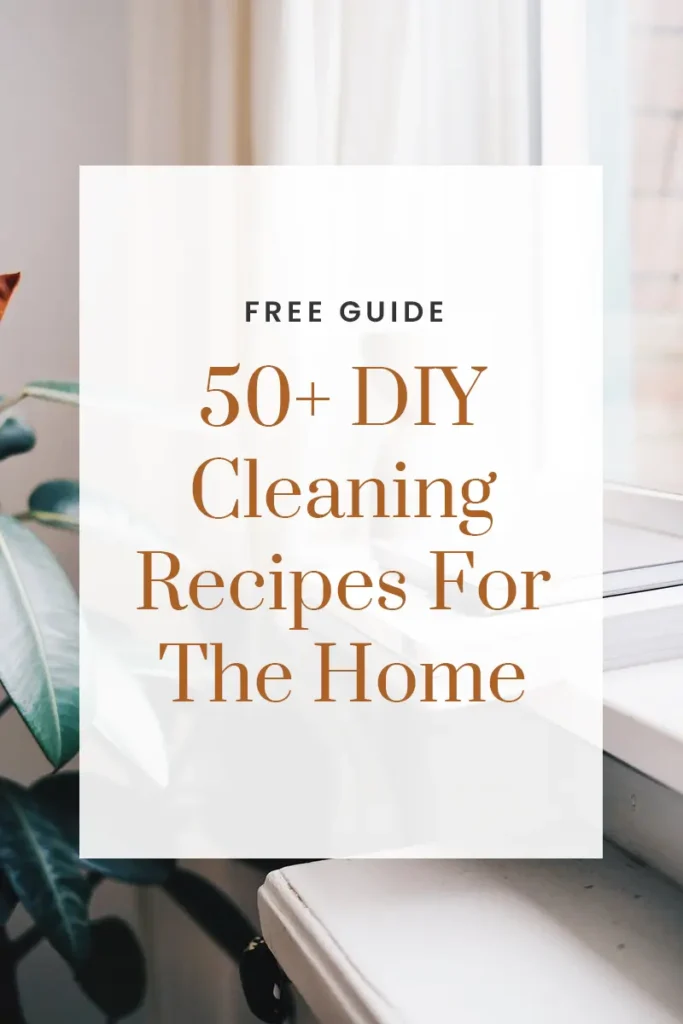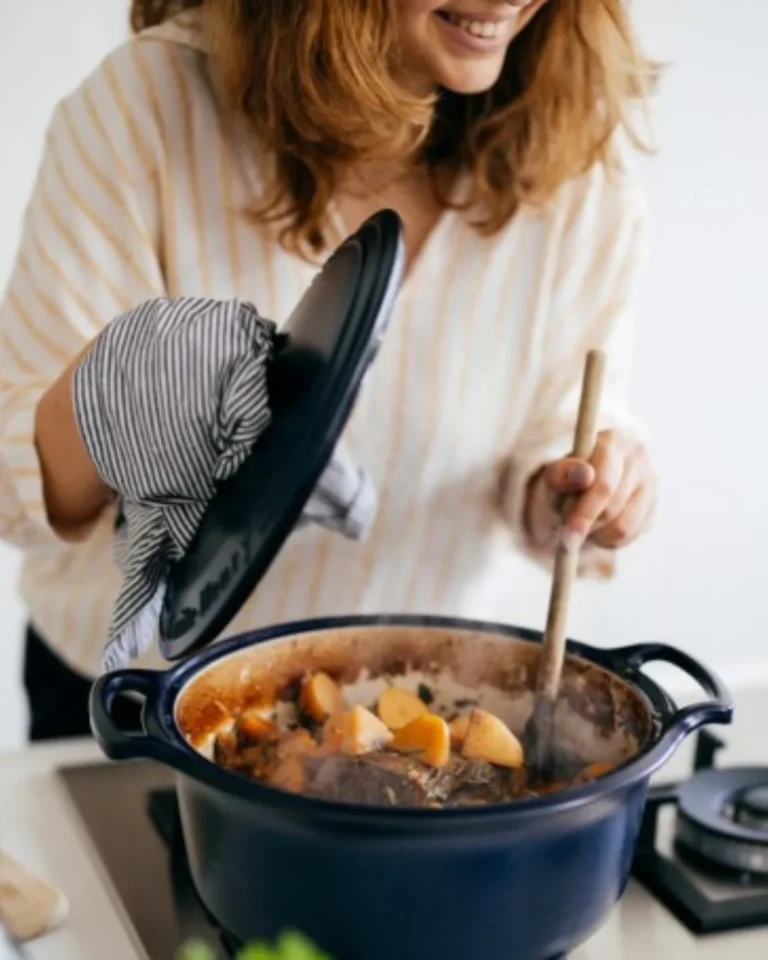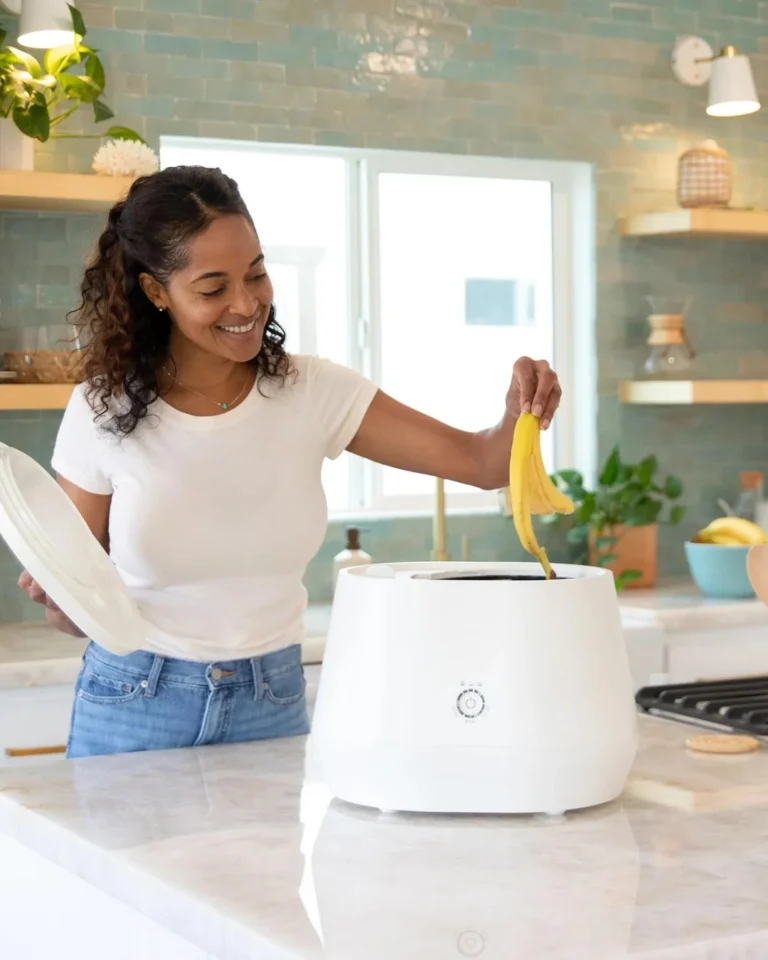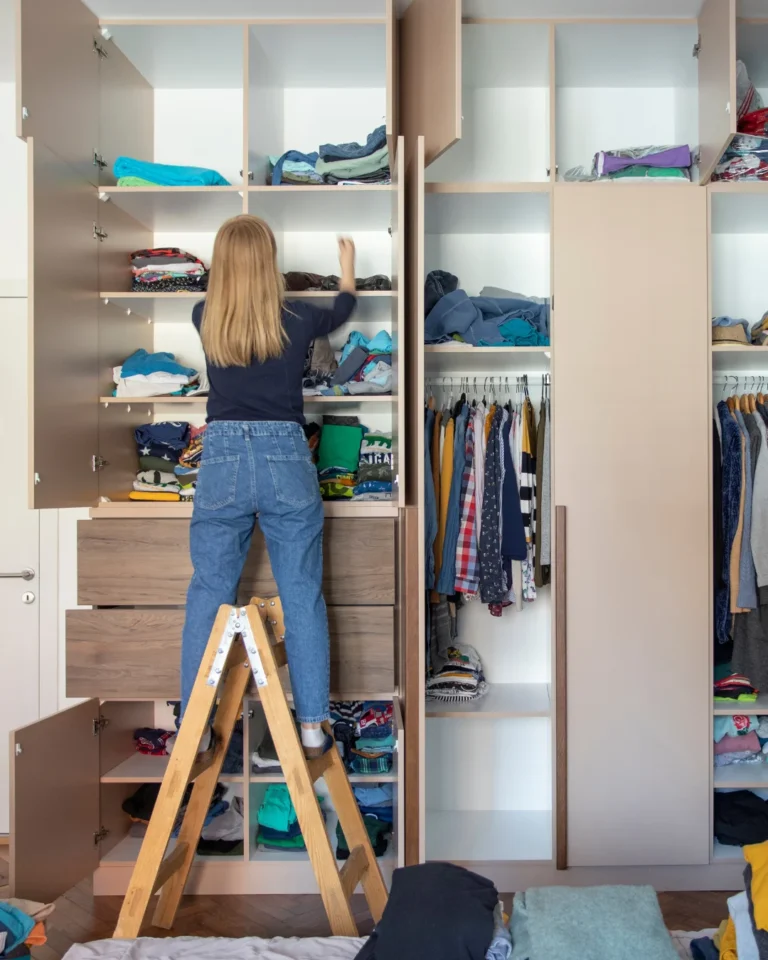SKL is reader supported. When you buy through links on our site, we may earn affiliate commission. Learn more here.
Looking for the best DIY zero-waste swaps for the bathroom and the kitchen? We got you covered.
Given that we throw out over 2 billion tons of household waste a year globally, now is the perfect time to rethink our choices.
These eco-friendly swaps have saved our family tons of money. They are super simple, effective, and can even be turned into gorgeous gifts for birthdays/holiday season.
Here’s a list of my top 12 DIY plastic-free swaps that I create in the comfort of my own home.
P.S. You may also enjoy our round-up of over 50 Best Zero Waste Online Shops For Amazing Package Free Shopping for all your eco-friendly shopping needs!
This post is all about DIY zero-waste swaps for the bathroom & kitchen.
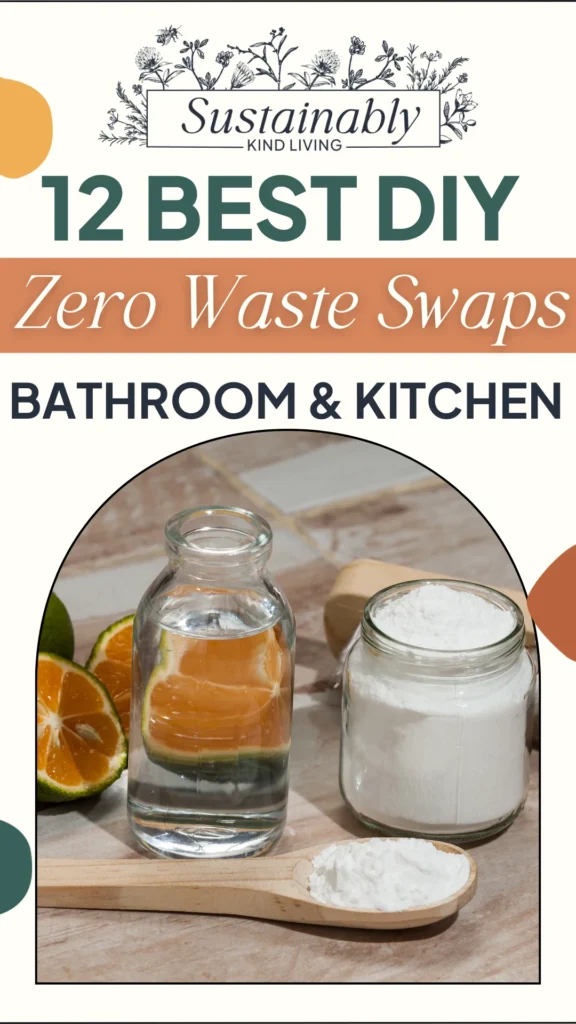
For me, DIY zero-waste swaps are my personal little rebellion against the disposable culture that’s clogging up our lives.
Nearly two-thirds of plastic waste comes from plastics with lifetimes of under five years, with 40% coming from packaging, 12% from consumer goods, and 11% from clothing and textiles.
Yes, that includes conventional cleaning products, disposable wipes, and skincare.
So, DIY plastic-free swaps are a way to show we care about our planet.
Going DIY isn’t just good for the Earth – it’s friendly on the wallet too.
Who knew that crafting your own stuff could save some bucks? Sounds amazing, right?!
But before we start listing my favorite zero-waste swaps that save money, let’s make one thing clear.
Please, do NOT throw any of your used/abused/torn/ragged items out until you have checked in with the zero waste community first.
There may be some amazing DIY crafts that you can do with these so-called “trash” items. Ragged old towels, stained/worn clothes, broken reusable bottles, old Tupperware, etc.
The longer we can keep these out of landfills, the better. So, let’s get to crafting and creating some zero-waste swaps!
What are DIY zero-waste swaps?
DIY zero-waste swaps are creative alternatives to everyday products that are environmentally friendly, budget-friendly, and super cost-efficient.
These zero-waste kitchen swaps and bathroom swaps aim to reduce reliance on single-use plastics and minimize waste by encouraging individuals to make their own sustainable replacements for common household items.
From bathroom essentials like toothpaste and shampoo to kitchen staples like cleaning supplies, these DIY swaps often involve using reusable materials and simple ingredients, allowing us to take an active role in minimizing their environmental impact.
Why are zero waste swaps important?
- Zero Waste Swaps Reduce Single-Use Plastics
Single-use plastics are a pervasive environmental concern, causing pollution and adversely affecting ecosystems.
Zero-waste swaps can easily address this issue by providing eco-friendly alternatives that eliminate or significantly decrease reliance on disposable plastics.
From DIY cleansers to zero-waste kitchen swaps like all-purpose cleaning products, these homemade formulas and items can contribute to a cleaner and greener planet by curbing the use of harmful single-use materials.
- Zero Waste Swaps Can Lower Our Carbon Footprint
The production and transportation of conventional goods contribute to greenhouse gas emissions.
Zero-waste swaps, with locally sourced materials and DIY alternatives, actively contribute to mitigating the environmental impact associated with the life cycle of products.
- Zero Waste Swaps Save Money
Constantly purchasing disposable products can strain our budgets and lead to unnecessary expenses.
So, whether you want to minimize your expenses or aim to accept the no-spend year challenge, zero-waste swaps offer a practical solution by being more cost-effective in the long run.
Reusable items and DIY formulas with pre-owned ingredients are the best way to live a greener lifestyle AND save money while doing so.
- DIY Zero-Waste Swaps Are Non-Toxic
You already know that conventional products may contain harmful chemicals that impact indoor air quality and overall well-being.
Oven cleaners, for example, are overloaded with butoxydiglyco, which can release harmful fumes and affect your respiratory health.
Zero-waste and eco-friendly swaps, on the other way, empower us to prioritize their health by choosing natural, non-toxic ingredients.
DIY alternatives for cleaning supplies, personal care items, and household products create healthier living spaces free from the harmful effects of synthetic chemicals.
This post is all about DIY zero-waste swaps for the bathroom & kitchen.
Super Easy DIY Zero Waste Swaps For The Bathroom & Kitchen
1. Homemade Cleaning Solutions
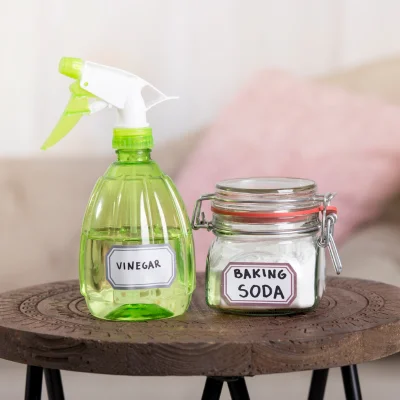
I grew up hating the smell of vinegar. My father had a bottle that he loved to keep in the bathroom to wipe down the cabinets and bathtub every week or so.
The smell would make me cringe as a kid. Later, when I was much older, I was hesitant to use vinegar as a cleaning solution.
That is until I found the infusion method. Here is how it works:
- Fill a large glass jar with a tight seal about 85% full (I love this size here) with white distilled vinegar.
- Peel 2 large lemons and/or oranges and toss the peels into the jar. Tightly seal.
- Let sit in your pantry or a cool/dark place for six weeks.
- Strain through a fine mesh strainer.
- Voila, Infused Vinegar!
General Cleaner
- Take a spray bottle (I love these) and fill it halfway with the strained-infused vinegar and half-distilled water.
- If you wish, you can also add some 60-70% proof alcohol (like rubbing alcohol) as well for the disinfectant power.
- Shake and use as you would a general cleaner. I love to use the vinegar and water mixture for cleaning windows, the kitchen, floors, and the like.
- Keep the already infused vinegar in the pantry, sealed, until ready to refill your spray bottles again.
If using alcohol, I add 1 part of each: 1 part alcohol, 1 part vinegar, and 1 part water. Many like to add 2 parts alcohol, 2 parts water, and 1 part vinegar or less. Do as you wish. Play around and find what works for you.
Curious about how to make your own white distilled vinegar? Check this post out here!
2. DIY Zero-Waste Stain Removal
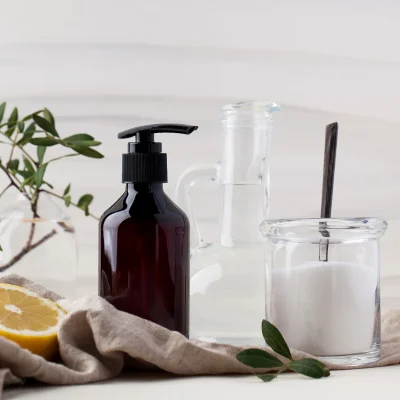
Whether on your countertops, walls, or any other dirty surfaces, this DIY stain removal remedy is here to save the day.
The process and ingredient list is pretty simple:
- Mix 1 tbsp of Borax with 1/3 cup of baking soda – the dynamic duo of stain removal!
- Armed with a damp sponge, generously apply this powerful solution to the dirty surfaces, ensuring it makes contact with the stubborn stains.
- Now, scrub away and let the Borax and baking soda work their magic on those persistent blemishes.
3. DIY Shower Cleaner With Vinegar
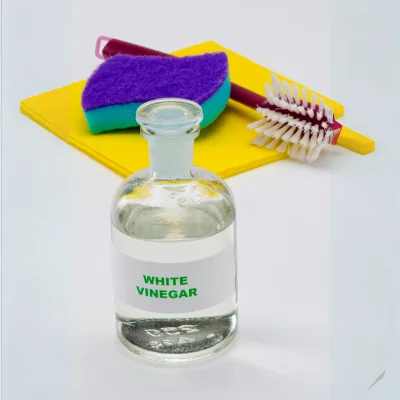
Oh, yes – once again, vinegar is here to save the day! This kitchen staple isn’t just for adding zing to your salads, it’s a powerhouse when it comes to tackling dirt, grime, and everything in between.
From banishing soap scum in the bathroom to bidding farewell to germs on kitchen surfaces, vinegar does it all.
Here’s how to make a DIY zero-waste bathroom swap and leave your shower gleaming without the guilt!
- Bring 2 cups of vinegar to a boil.
- Carefully use the warm vinegar to wipe down your shower door and walls.
- Keep things damp by wiping them every five to eight minutes for a total of 30 minutes.
- Now, let’s amp up the cleaning power!
- Dampen a non-scratch sponge with vinegar, sprinkle on some baking soda, and scrub away.
- Rinse off to bid farewell to germs, mold, water spots, and soap scum.
4. Unclog Your Toilet With This DIY Toilet Cleaner
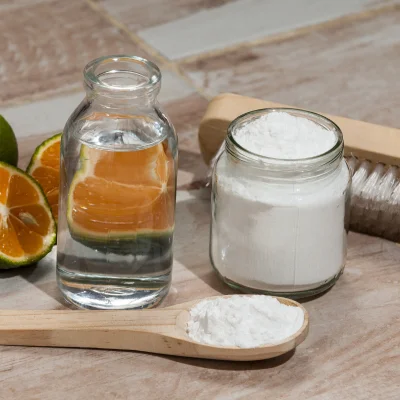
This DIY unclogger will be your best ally in the battle against bathroom blockages.
The combination of boiling water, baking soda, and vinegar works exceptionally well as a toilet unclogger.
First, assess the water level in your toilet. If it’s too high, channel your inner plumber and scoop some out until it’s at least halfway down.
Now, let’s kick it off with a burst of action! Pour in that 1 liter of boiling water, setting the stage for the grand unclogging performance.
Follow up with a superhero duo – sprinkle 1 cup of baking soda into the toilet bowl, ensuring it makes contact with the clog.
And now, slowly add 1/2 to 1 cup of vinegar into the mix.
Wait 20 minutes, letting the concoction penetrate and break down the stubborn clog. If you’re feeling extra bold, leave the mixture overnight for an extra-strength unclogging solution.
5. The Orphan Socks
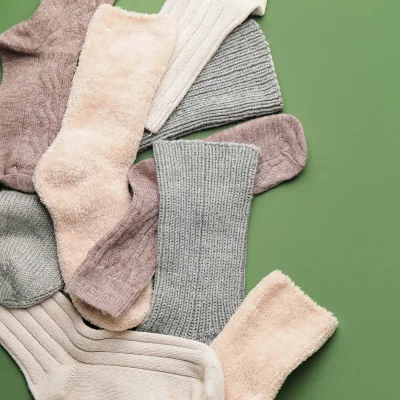
Take all of your old orphan socks and place them in two jars: One for the large socks and the second for the smaller ones.
The large socks are fantastic to use as dusters and many will even fit the dusting mop (think Swiffer!).
The small socks are fantastic for SO many things. Crafts, Halloween costumes, homemade dolls, bath soaks (add oatmeal to a sock, tie and drop into a bathtub!), ice compressor covers (fill with some peas, ice, or whatnot when someone has a boo-boo), and so much more. Keep those socks!
6. DIY Dish Towels & Clothes
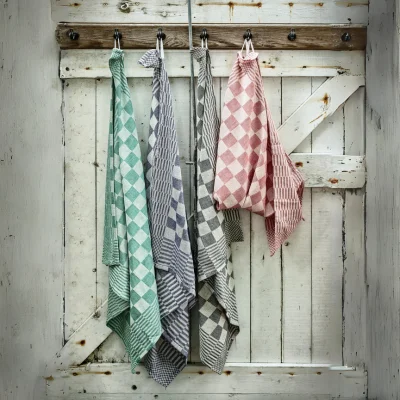
Choose a high-quality, natural, and absorbent fabric for your dish towels. Aim for fabrics like 100% cotton or linen blends.
For a unique and eco-friendly touch, consider sourcing vintage linens, clothing, or other thrift fabrics.
- Cut the fabric into rectangles based on your preferred size. If you have a complete yard of fabric, square off the edges and fold it into four.
- Cut along the folds into four equal rectangles. Adjust the size according to your preferences, considering shrinkage and hemming.
- Before sewing, pre-wash your fabric using the settings with which you will wash the finished towels. This prevents unintended shrinkage later on. Iron the fabric as needed after washing.
- Now, use a sewing machine to hem the edges of the rectangles. Of course, you can also hand sew these amazing DIY zero-waste swaps for the kitchen too!
- Fold the edges over and sew a straight stitch to secure the hems. You can experiment with different stitching patterns or decorative edges for added flair.
- Once the hems are secure, trim any excess threads, and give your dish towels a final press with the iron if needed.
7. Save Those Jars
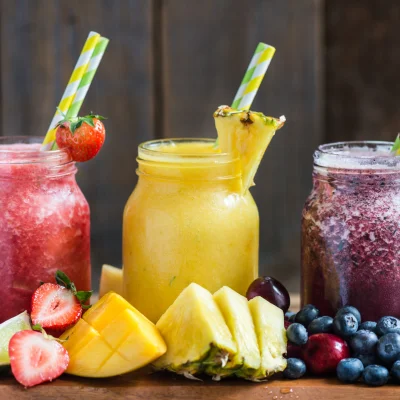
It may drive Martin a bit crazy, but we have NEVER had traditional drinking glasses. We drink from old jars!
As a woman who loves to DIY just about everything… I have to say that I have my fair share of glass jars.
We save each and every one and use them for drinking glasses, overnight oats glasses, dessert glasses, DIY beauty recipes, and tons of prepping needs.
I cannot recommend saving your glasses enough! It’s like…free stuff! Haha.
Every Sunday I start my meal prep by blending up 3 sauces/dressings for dipping and drizzling.
My glass jars are the perfect companions for this and I have them in almost every size, so it’s always a perfect fit!
We keep the large ones (think sauerkraut or pasta sauce) for drinking, keep the small ones for baby-sized drinks, and the rest is used for everything in between.
I do recommend storing the lids in a reusable bag somewhere that’s convenient.
8. Compost At Home
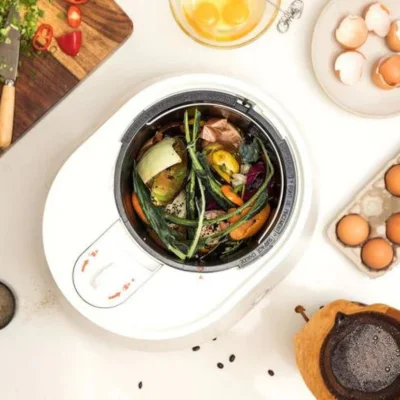
Granted, this isn’t a zero-waste kitchen swap exactly, but it’s still extremely important. Home composting with a composter is a fantastic way to reduce kitchen and garden waste while creating nutrient-rich compost for your plants.
All you have to do is select a compost bin or composter that suits your space, whether it’s a backyard, balcony, or kitchen.
There are various types, including traditional bins, tumblers, and worm composters.
Consider the amount of waste you generate and the space available. No worries, countertop electric composters are designed with features to control odors effectively.
Many models have filters or ventilation systems that help minimize unpleasant smells associated with decomposing organic matter.
Here’s a list of The 5 Best Electric Countertop Composters To Fight Food Waste!
9. DIY Reusable Tea Bags
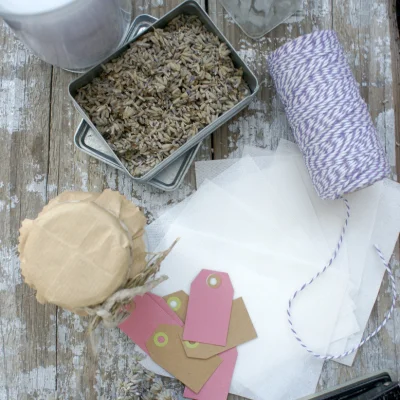
Next up is one of the most clever DIY zero-waste swaps for the kitchen.
Creating DIY reusable tea bags is a simple and sustainable way to enjoy your favorite loose-leaf teas without generating unnecessary waste.
Here’s how:
- Firstly, cut the muslin or cheesecloth into squares or rectangles, depending on the size you desire. A standard size is around 3×4 inches, but you can adjust it according to your preference.
- Fold the fabric in half, creating a pocket for your tea leaves. If you want a neater edge, fold the top edge over and sew it down. Use a sewing machine or hand-sew along the open sides, leaving the top open.
- At the open end, leave enough fabric to create a tie. This will be used to secure your tea bag. You can sew a small loop or attach a wooden or metal bead at the end for easy tying and untying.
- Once your tea bag is sewn, open it up, and fill it with your favorite loose-leaf tea. Be mindful not to overfill; leave enough room for the tea to expand as it brews.
- Secure the tea bag by tying the end with the attached tie or bead. Drop the tea bag into your hot water, just like you would with a regular tea bag. Allow it to steep to your desired strength.
- After use, empty the used tea leaves into your compost or trash. Rinse the reusable tea bag and let it dry. If you’re using herbs or strong-flavored teas, you may want to wash it with mild soap.
- Your DIY reusable tea bag is ready to be used again! Simply refill with fresh tea leaves and enjoy another cup.
10. Homemade Hankies & Wipes
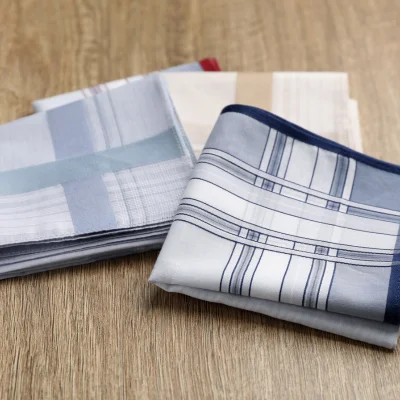
The options are really endless for this DIY zero-waste swap. You can create your own hankies, cloth wipes, wet wipes, face wipes, and even toilet paper if you are up for it!
All you need are those old raggedy clothes/towels that no longer serve their purpose.
Zero-Waste Hankies
I love mine to be a nice long rectangle. It’s as easy as cutting the fabric into your shape!
To avoid any fraying, you can easily sew the edges, but I only do this for certain fabrics that are already on their very last leg.
For the most part, just slicing and folding is all I need to do.
Zero-Waste Cloth Wipes/Wet Wipes
I love to use the baby’s old blankets/old clothes for these. Soft and perfect for wiping clean!
Simply slice them into small squares and store them in a reusable bag.
If you want wet wipes, you can grab a mason jar and fill it with water and a tsp of coconut oil.
Add the small squares to the mason jar and use them as you would wet wipes!
For on-the-go wet wipes, pull out a handful of the squares, squeeze gently, and then place them into a reusable bag.
To wash, simply toss them into the washing machine as you would soiled towels. Be sure to replace the water and coconut oil every second day.
Zero-Waste Face Wipes
I like to use two types of fabrics for this! One super soft fabric like an old baby blanket and another semi-rough fabric for light exfoliation.
Slice into small squares. These are fantastic for oil cleansing.
11. Homemade Face Cleaners
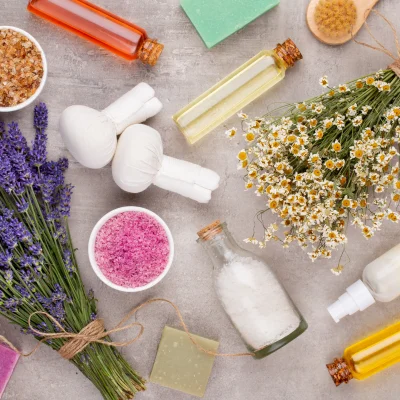
There are a few different ways to go about cleansing your face in the zero waste/low waste realm.
You could go with Martin’s routine of using warm water and a light exfoliating cloth wipe (his skin is fabulous by the way), you could go with a bubbly clean via Castile soap, a muddy clean via bentonite clay, or an oil cleansing clean via my current favorite recipe!
Warm Water & An Exfoliating Cloth Wipe
This is where your raggedy old towels and clothes come in! You need a light exfoliating cloth (Martin uses the baby’s old bath towel cut into squares) and warm water. If he is extra dirty, he will use some coconut oil as well.
The Castile Soap Solution
For this, you will need some Castile soap and water. Essential oils are a great addition (I enjoy lavender and frankincense).
I used this face wash for the first year on our journey and it was lovely! However, my skin let me know (yes, she speaks to me in her own way) that she needed something much more nourishing as I got older.
If you want to try this cleanse out, mix 8 oz water with 8 oz liquid Castile soap. If you wish to add the essential oils, add 15 drops of each lavender and frankincense!
Feel this recipe out and then add more water as needed until it reaches your desired feeling.
Bentonite Clay Cleanse
Even though I am strictly using an oil cleanser now (see below), I still use my bentonite clay once a week to deep clean. I highly recommend it!
Simply add 2 tsp (using a non-metal spoon) of bentonite clay to the palm of your hand followed by 2 tsp of water.
Mix and then rub into your face very well. I like to let it sit for a few minutes and then wash it off with lukewarm water. Pat dry and follow up with a face oil or moisturizer.
My Oil Cleanser
Here’s another favorite DIY zero-waste swap that saves money!
First, you want to choose your base. My research recommends sunflower oil, jojoba oil, almond oil, hemp oil, or grapeseed oil. You can mix and match to your liking.
I personally use straight jojoba oil.
I pick up my jojoba oil from our local farmers market every 6-8 weeks or so, for about 10 euros a bottle and bring back the empty bottle.
So here is how I go about this:
- First, I add a hefty tsp of oil to the palm of my hand and rub it into my face and neck.
- I like to massage my face for a solid minute or 2 and let the oil sit for an extra minute.
- I grab my face cloth, run hot water over it, and quickly wring it out.
- Next, I lay the warm cloth over my face and gently wipe my face.
- There should still be oil sitting on the face (a very light layer), so no need for an additional moisturizer!
12. DIY Magnesium
This swap is more for your health than cleaning – but we just could not leave it out!
- Bring ½ cup of distilled water to a boil.
- Add ½ cup magnesium flakes to a glass jar.
- Once water has boiled, pour it into the bowl of magnesium flakes and stir until the flakes completely dissolve.
- Let this mixture cool and transfer to labeled spray bottles for daily use.
How do I switch to zero waste?
Congrats! Switching to a zero-waste lifestyle is an amazing and super impactful decision. Here’s how you can get started:
- Assess Your Current Waste
Start by understanding your current waste habits. Conduct a waste audit to identify areas where you generate the most waste and assess which items can be replaced with zero-waste alternatives.
- Educate Yourself
Learn about the principles of zero waste and the environmental impact of different materials. Familiarize yourself with sustainable practices, and explore the benefits of reducing your carbon footprint to inspire your journey!
- Set Realistic Goals
You can’t save the planet on your own! And, that’s ok. It’s important to define achievable and realistic goals. Going zero waste doesn’t happen overnight. Start with small changes and gradually incorporate more sustainable practices into your routine.
- Reduce Single-Use Plastics
Identify and eliminate single-use plastics from your daily life. Invest in reusable alternatives such as reusable water bottles, zero-waste toothpaste, organic tampons, cloth shopping bags, and metal straws.
- Embrace A Minimalist Mindset
Adopt a minimalist approach by decluttering your living space. Focus on essentials and choose quality over quantity. This not only reduces waste but also simplifies your lifestyle.
- DIY & Upcycling
Explore DIY zero-waste kitchen swaps and bathroom swaps for common household items. Make your cleaning products, personal care items, and even certain foods.
Additionally, consider upcycling – finding new uses for old items instead of discarding them. We absolutely love zero-waste swaps that save money!
- Shop Smart
Choose products with minimal or compostable packaging. Buy in bulk to reduce packaging waste. Consider shopping at local markets or bulk stores that allow you to bring your containers.
- Composting
Start composting your kitchen waste, including fruit and vegetable scraps. Composting is an effective way to divert organic waste from landfills and create nutrient-rich soil for your garden.
- Educate & Inspire Others
Share your zero-waste journey with friends and family. Educate others about the benefits and challenges of adopting a zero-waste lifestyle to encourage collective efforts for a more sustainable community.
Tips for DIY zero-waste swaps for beginners
First of all, start small! Begin with simple swaps to avoid feeling overwhelmed.
- Replace disposable items like disposable wipes with reusable cloth alternatives, start saving your glass jars, and begin to slowly recreate some of the best homemade cleaning solutions. Small changes can make a big impact over time.
- Create your own cleaning products using basic ingredients like vinegar, baking soda, and essential oils.
- Mix up a multipurpose cleaner or a natural scrub for your kitchen and bathroom surfaces. The DIY zero-waste bathroom swaps and kitchen swaps are endless – all you need is time and imagination!
- Before buying something new, ask yourself if it’s necessary and if it aligns with your zero-waste goals. Being mindful of your purchases helps reduce unnecessary waste.
To get more inspiration for DIY zero-waste swaps that save money, connect with local zero-waste or sustainability groups.
They often share tips, resources, and DIY ideas. Learning from others’ experiences can be both informative and motivating.
Do DIY zero-waste swaps save money?
Yes, I personally have a ton of zero-waste swaps that save money in my home! As you shift away from single-use, disposable items, you’ll likely see a reduction in your regular purchases.
Also, making your own products, such as cleaning supplies or personal care items, can be more cost-effective in the long run.
Purchasing in bulk is another strategy that may lead to savings, as it often reduces the cost per unit and minimizes packaging waste.
How can DIY zero-waste swaps help reduce plastic pollution and waste in landfills?
The root causes of plastic pollution and waste in landfills often lie in the use of single-use, non-biodegradable plastics.
Items such as bottles, bags, and packaging, contribute significantly to the accumulation of plastic waste in oceans, rivers, and terrestrial environments.
These materials take centuries to decompose and can have severe environmental consequences, including harm to wildlife and ecosystems.
That’s because, as plastic items break down into smaller particles, microplastics infiltrate ecosystems, posing threats to marine life and entering the food chain.
On top of that, the sheer volume of plastic waste in landfills contributes to issues like soil degradation, groundwater contamination, and the release of greenhouse gases.
As landfills reach capacity, they necessitate expansions or the creation of new disposal sites, perpetuating a cycle of environmental degradation.
DIY zero-waste swaps, on the other hand, help use repurposed, reusable, compostable, or easily recyclable materials.
Homemade alternatives, such as DIY cleaning products, personal care items, and food storage solutions, typically involve minimal or no plastic packaging.
By making these items at home, individuals directly tackle the disposable culture and excess plastic consumption that contribute to plastic pollution and landfill waste.
This post was all about DIY zero-waste swaps for the bathroom & kitchen.
In conclusion, embracing a zero-waste lifestyle in the bathroom and kitchen is not only feasible but also rewarding. By making simple yet impactful swaps, we can significantly reduce our environmental footprint and contribute to a healthier planet.
I truly hope these 12 simple DIY zero-waste swaps for the bathroom and kitchen help you look at zero waste a bit more enthusiastically! I promise it is such a fun and creative way to live.
If you enjoyed this article on DIY Zero-Waste Swaps, check out these other articles below!
- 5 Super Simple Zero Waste Cleaning Swaps For A Healthy Home
- 21 Best Non-Toxic Swaps To Make in 2024 For A Healthy Kitchen
- 7 Super Simple Sustainable Swaps To An Eco Friendly Thanksgiving!
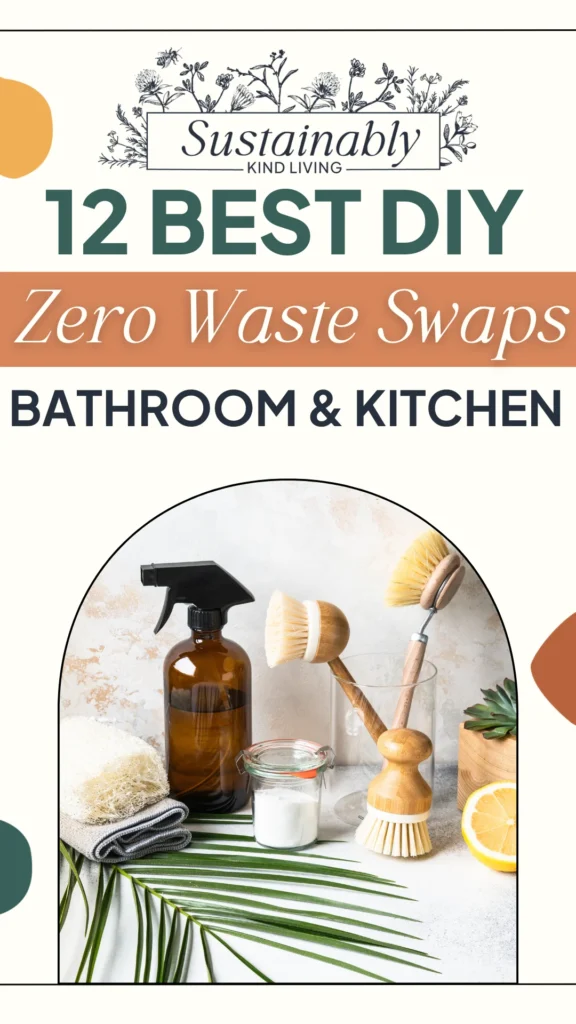
 Enter To Win Over $1500+ In Non-Toxic Goodies!
Enter To Win Over $1500+ In Non-Toxic Goodies! 